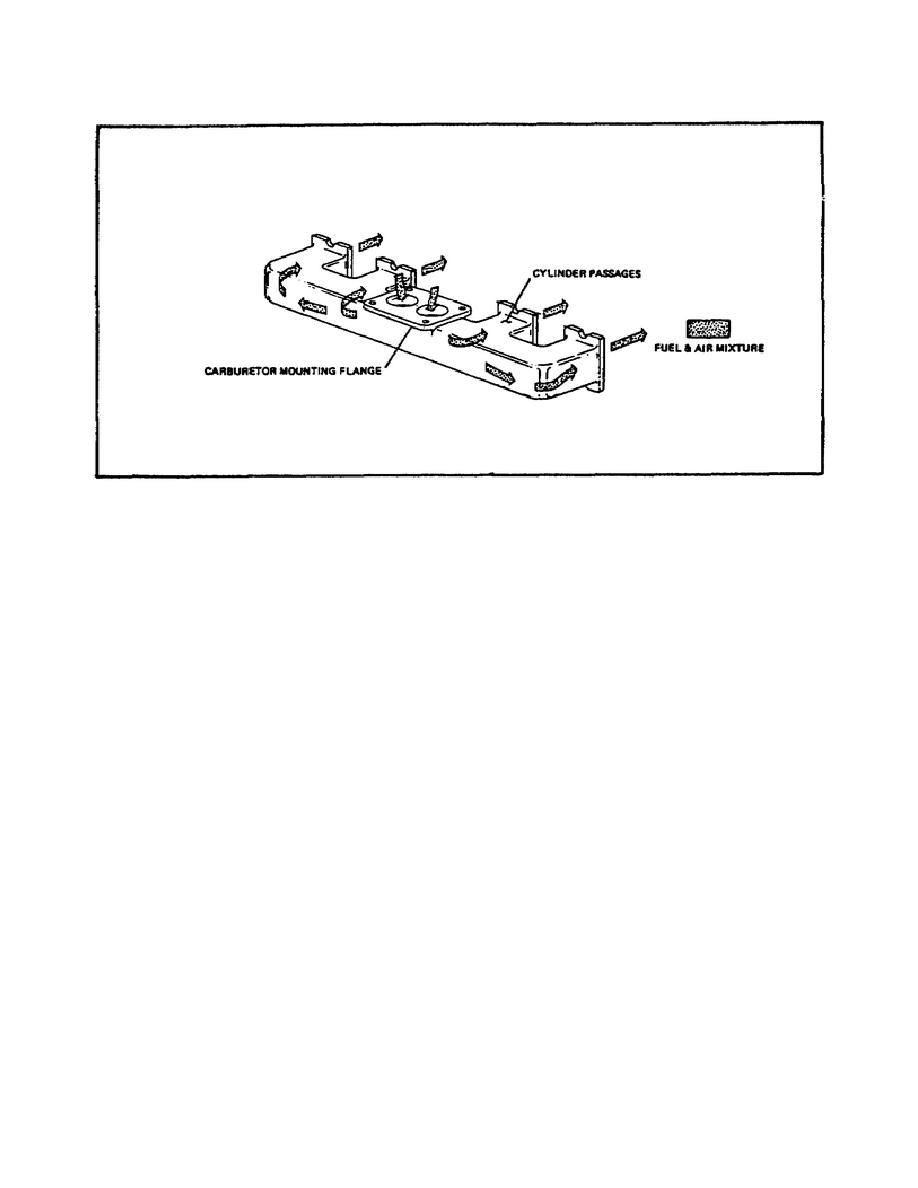
PRIN. OF INTERNAL COMBUSTION ENGINES - OD1619 LESSON 2/TASK 1
FIGURE 38.
TYPICAL INTAKE MANIFOLD.
(1) Deliver the mixture to the cylinders in equal quantities and proportions.
This is important for smooth engine performance.
The lengths of the passages
should be as near equal as possible to distribute the mixture equally.
In a
gasoline engine, there is a series of pipes or passages through which the fuel-air
mixture from the carburetor is directed to the engine cylinders on the intake
stroke. The diesel engine does not have a carburetor so the air is directed into
the cylinder and the fuel is injected to mix with the air.
(2) Help to keep the vaporized mixture from condensing before it reaches the
combustion chamber. Because the ideal mixture should be vaporized completely as it
enters the combustion chamber, this is very important. To reduce the condensing of
the mixture, the manifold passages should be designed with smooth walls and a
minimum of bends that collect fuel. Smooth flowing intake manifold passages also
increase volumetric efficiency, the method of measuring an engines ability to take
in its intake mixture.
(3) Aid in the vaporization of the mixture.
To do this, the intake manifold
should provide a controlled system of heating, as described in paragraph 3c on page
53.
This system must heat the mixture enough to aid in vaporization without
heating to the point of significantly reducing volumetric efficiency.
48




 Previous Page
Previous Page
